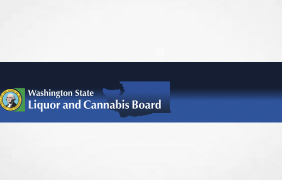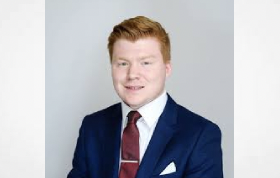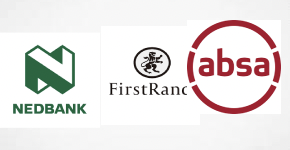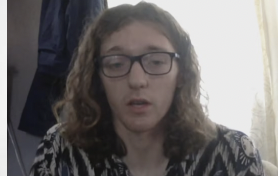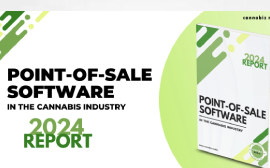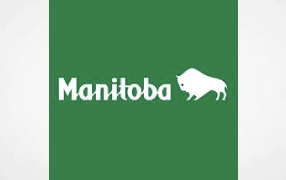Just in time for summer, the miniseries “How to Change Your Mind” will be launched in July on the Netflix streaming platform. In this documentary series, author Michael Pollan and Co. analyse the history and applications of psychedelic substances such as LSD, psilocybin, MDMA and mescaline. According to experts, research with psychedelics (also known as hallucinogens) or related substances will increase worldwide in the coming years. The market launch of drugs containing MDMA for post-traumatic stress disorder (PTSD) or psilocybin for the treatment of depression is expected in the next five to ten years[1]. The legal framework regarding the use of psychedelics in patients is very pragmatic in Switzerland and unique internationally. Switzerland is a leader in the research and use of psychedelics in psychiatry and is considered an innovation driver in this field. Nevertheless, the regulatory hurdles for researchers and patients are still extremely high. In this article we elaborate on the requirements under which psychedelics may be used in Switzerland today.
The psychedelics commonly used today were first synthesized at the beginning of the 20th century. Since about the middle of the 20th century they were used in psychotherapy and partly marketed as preparations (cf. Delysid®, LSD 25). LSD was first discovered by Albert Hofmann, who synthesized, ingested, and learned of the psychedelic effects of LSD in 1943 when he worked for Sandoz Laboratories (“Sandoz”, now a subsidiary of Novartis) in Basel. From 1949 to 1966 LSD was manufactured and made available to psychiatrists and researchers worldwide. During this time, the substance was used to treat addictive disorders, depression, and anxiety associated with cancer, and was studied in this context. Psilocybin was first extracted and identified in 1958. Between 1961 and 1965, psilocybin was also manufactured by Sandoz and made available for psychiatric research and use.
In the 1970s, the use of psychedelics was banned due to political pressure and increasing (uncontrolled) consumption. It was not until the 1990s that psychedelics research was resumed, first with psilocybin and DMT, and since 2008 also with LSD. For some years now, the potential of psychotropic substances for the treatment of mental illness has also been and continues to be increasingly recognized by private investors. The market research company Data Bridge Market Research projects that the market capitalization of the psychedelic industry will grow 16.8 percent annually to $9.8 billion by 2029.[1] Currently, the biggest obstacle to the applications of psilocybin, mescaline, MDMA or LSD is political in nature.
The Legal Framework
The Federal Act on Narcotics and Psychotropic Substances (Narcotics Acts, NarcA) regulates, among other topics, the permissibility of manufacturing, dispensing, obtaining, and using narcotics and psychotropic substances for medical and scientific purposes (cf. Art. 4 ff. and in particular Art. 8 NarcA). In addition to the provisions in the NarcA, further regulations can be found in the Federal Council ordinances, i.e., the Narcotics Control Ordinance (BetmKV) and the Narcotics Addiction Ordinance (BetmSV). In addition, reference should be made to the Narcotics Control Ordinance (BetmVV-EDI), which is also relevant and issued by the Department of Home Affairs (FDHA).
The NarcA distinguishes between narcotics and psychotropic substances. Narcotics are dependence-producing substances and preparations of the types of morphine, cocaine or cannabis, as well as substances and preparations that are manufactured on the basis of these or have a similar effect (Art. 2 lit. a NarcA). Psychotropic substances, on the other hand, are dependence-producing substances and preparations which either contain amphetamines, barbiturates, benzodiazepines, or psychedelics or have a similar effect to these (Art. 2 lit. b NarcA). Psychotropic substances are mentioned only selectively in the NarcA. However, unless the law provides otherwise, the provisions on narcotics also apply to psychotropic substances.
The collective term psychedelics or hallucinogens respectively (from Latin [h]al[l]ucinatio – thoughtless speech) covers various substances that cause a perceptual and sensory disorder[2]. These include biogenic substances (e.g., magic mushrooms or ‘psilos’), semi-synthetic substances (e.g., LSD) and synthetic substances (e.g., MDMA, GHB). The substances lysergide and mescaline are explicitly mentioned in the NarcA (cf. Art. 2 lit. b NarcA).
In principle, the handling of narcotics and psychotropic substances in Switzerland is subject to authorization. Companies and persons who cultivate, manufacture, process, or trade in narcotics require a license from the Swiss Agency for Therapeutic Products (Swissmedic; cf. Art. 4 para. 1 NarcA). Stricter regulations apply to the handling of the substances listed exhaustively in Art. 8 NarcA, to which psychedelics also belong (Art. 8 para. 1 lit. c NarcA). The FDHA designates all narcotics and psychotropic substances and determines which control measures they are subject to in detail. For this purpose, the controlled substances are divided into seven different categories and listed in the corresponding schedules a-g. The prohibited controlled substances (cannabis, LSD, psilocybin, MDMA, etc.) are listed in schedule ‘d’.
Psychedelics, unless they serve as an active ingredient of an approved medicinal product (note: currently no such medicinal product is approved; cf. Art. 8 para. 6 and 7 NarcA), may only be grown, imported, manufactured, or placed on the market with an exceptional permit from the Federal Office of Public Health (FOPH) and only for a limited purpose, i.e., for (1.) scientific research, (2.) the development of medicinal products or (3.) limited medical use.
Exemption Permits in Particular
According to Art. 8 para. 5 NarcA, the FOPH may grant exemptions for the cultivation, importation, production, and marketing of prohibited narcotics (cf. BetmVV-EDI, schedule d), if the application is not in conflict with any international agreement and these narcotics are for restricted medical use, scientific research, or drug development.
The reservation according to which an exceptional authorization may be granted if there is no international agreement to the contrary is merely declaratory in nature (cf. ruling BVGer C-4592/2019). Switzerland has not acceded to any international agreement that absolutely prohibits the cultivation, importation, production, or placing on the market of a specific narcotic without the approval of an exceptional authorization.
Forms of application with exceptional admissibility character
“Limited Medical Use”
As early as between 1988 and 1993, the FOPH issued licenses for the restricted medical use of LSD and MDMA. A total of 170 patients were treated under these licenses. After a longer interruption, the FOPH has been issuing licenses for the restricted medical use of LSD and MDMA again since 2014 (number of licenses: 2015:12; 2016:14; 2017:22; 2018:30; up to and including May 2019:15; newest numbers of 2022: 45 MDMA, 22 LSD, and 34 Psilocybin; whereby several licenses may concern the same patient [different substances, extensions])[3].
In general, a medical application exists if a substance or method is used by a physician based on a medical indication (cf. judgment BVGer C-4772/2019, N 7.4.1.2). The wording of Art. 8 para. 5 NarcA “exceptional approval… for a limited medical application” emphasizes the rather narrow scope for such an application (cf. judgment BVGer C-4592/2019, N 5.4.1.2).
An application for a limited medical use can only be submitted by the treating physician and must contain information about the patient, medical information about the diagnosis and the indication for the treatment, a justification for the desired treatment, dosage, and treatment duration as well as the sources of supply. The request must also be accompanied by a confirmation from the requesting physician and the patient. The requesting physician must confirm that all information has been correctly recorded and that an interim report on the course of treatment will be prepared in accordance with the requirements of the FOPH. In addition, the patient must declare his or her consent in writing.
Exceptional use permits are only granted if (a) the patient is suffering from a mostly incurable disease, (b) the suffering can be reduced by the controlled substance, (c) conventional treatment therapies have been exhausted, and (d) the treatment will allow the patient to lead a more autonomous lifestyle.
To clarify, it should be noted in this context that for the active ingredient cannabis – as defined in Art. 8 para. 1 NarcA – an amendment to the law was passed by Parliament on 19 March 2021. Accordingly, the adopted amendment is intended to facilitate access to cannabis medicinal products for thousands of patients as part of their treatment. Of particular note are conditions such as cancer and multiple sclerosis, where cannabis-based medicines can alleviate chronic pain. As a result of the amendment to the law, the construct of the exemption permits according to Art. 8 para. 5 NarcA will be abolished as of 1 August 2022 for medicinal cannabis (however, not so for recreational cannabis). By abolishing the special authorization requirement for the prescription of medical cannabis, cultivation, processing, production, and trade will be subject to the authorization and control system of Swissmedic.
As a result, medical cannabis will be regulated like other narcotics used for medical purposes (e.g., morphine, methadone, cocaine). In addition, the commercial export of cannabis for medical purposes will be allowed, which will open new commercial opportunities for domestic suppliers of the raw material as well as for specialized manufacturers of herbal medicinal products.
“Scientific Research”
According to Art. 8 para. 5 NarcA in conjunction with Art. 28 para. Art. 28 para. 1 lit. b BetmSV, an exceptional approval by the FOPH is possible if scientific research is conducted with prohibited narcotics.
For the granting of the authorization, a precise description of the scientific research carried out, the designation of the controlled substance according to list d of annex 1 and 5 BetmVV-EDI, the required quantity of the substance, the desired duration of the investigation and, if applicable, a vote of the ethics committee must be submitted to the FOPH. In addition, precise details of the responsible person and their deputy must be provided, and the control of good laboratory practice must be ensured by means of an external quality control (cf. Art. 28 Para. 2 lit. b BetmSV).
In the last ten years, quite a few applications for scientific research with psychedelics have been approved. Since 2012, 16 studies have investigated the effects of LSD, eight the effects of MDMA, and six the effects of psilocybin.[4]
The “drug development”
According to Art. 8 para. 5 NarcA i.V.m. Art. 28 para. 1 lit. c BetmSV, it is possible to develop medicinal products with prohibited narcotics. This description of purpose concerns the production of medicinal products or precursors for medicinal products that are not ready for use.
As of today, no application for an exemption for drug development has been filed. However, it can be assumed that this situation will change in the course of future developments and that such applications can be expected to increase.
Procurement and delivery
Import and export of prohibited narcotics
The import of prohibited narcotics requires an import permit from Swissmedic (cf. Art. 5 NarcA in conjunction with Art. 24 para. 1 lit. c BetmKV) in addition to the exemption permit from the FOPH (Art. 8 para. 5, para. 6, and 8 NarcA). Such a permit is issued if an applicant has received an exemption permit from the FOPH in accordance with Art. 8 Para. 5 NarcA.
Whether the export of prohibited narcotics is permitted or not is controversial and does not explicitly derive from the law. The amendment to the law of August 1, 2022 has at least eliminated this uncertainty in the area of cannabis regulation; the export of cannabis for medical purposes is now permitted[5]. Since the aforementioned change in the legal situation only concerns the narcotic “cannabis” (for medical purposes), the legal situation with regard to the possibility of exporting psychedelics, even for research purposes, remains in limbo.
Cultivation, production and placing on the market of prohibited narcotics
Currently, no psychedelics is contained in an approved drug. LSD and MDMA are dispensed to patients as medicinal products not subject to authorization. They are produced patient-specifically as so-called extemporaneous preparations and dispensed to patients on the basis of a doctor’s prescription (Art. 9 para. 2 lit. a HMG).
Concluding remarks
The use of psychotropic substances for medical purposes holds great medical and economic potential. A progressive attitude on the part of the Swiss authorities enabled scientific experimental and therapeutic research into psychedelics at an early stage. However, the legal framework currently in force does not adequately reflect the scientific progress made in recent years.
Due to the current promising research activity, frequency of use and the growing demand from patients, it would be desirable if the same liberalizations as for medical cannabis were also pushed forward in the area of psychedelics. Otherwise, Switzerland as a pharmaceutical and research hub risks losing its leading role in the research of these promising substances. The authorization-free treatment of patients with psychedelics and the export of “Swiss made” psychedelic substances for research and medical purposes is therefore well overdue.
Hopefully, the Netflix mini-series mentioned at the beginning of this article will further promote a change in the way viewers, authorities and legislators alike perceive psychedelic substances – fully in the spirit of “How to Change Your Mind“.
[1] Cf. Data Bridge Market Research, (last viewed 13 July 2022).
[2] Cf. Fingerhuth Thomas/Schlegel Stephan/Jucker Oliver, in: BetmG Kommentar, Betäubungsmittelgesetz mit weiteren Erlassen, 3rd ed., Zurich 2016, Art. 2 Begriffe / C. -G, N 172.
[3] Cf. Prof. Dr. med. Matthias Liechti, Experten-Bericht: Stand und Entwicklungsszenarien in Bezug auf die medizinische Behandlung und klinische Forschung mit Halluzinogenen und MDMA, Basel 2019.
[4] S. Clinicaltrials platform, last viewed 13 July 2022.
[5] General information of the FOPH, last viewed 13 July 2022.
[1] Expert report Prof. Dr. med. Matthias Liechti: Stand und Entwicklungsszenarien in Bezug auf die medizinische Behandlung und klinische Forschung mit Halluzinogenen und MDMA, Basel 2019, p. 46 ff.
